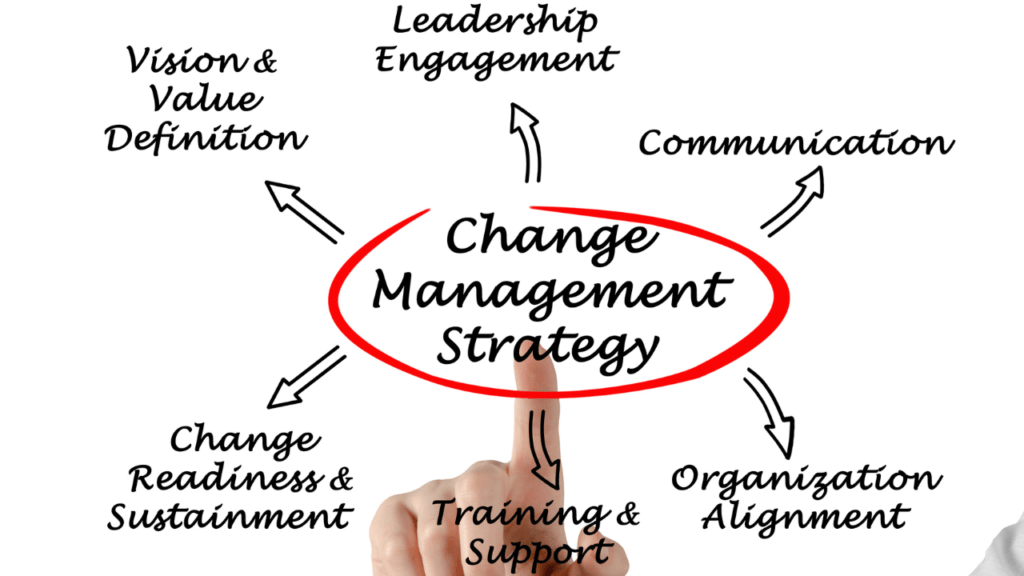TOP leadership training topics, we are coming for YOU!
In the ever-evolving landscape of business and organizations, effective leadership stands as the cornerstone of success. It’s not merely a title or a position; it’s a dynamic skill that moves teams towards a shared purpose, navigates challenges with resilience, and inspires innovation. Leadership isn’t confined to a select few; it’s a capability that can be nurtured, honed, and expanded upon at all levels in an organization.
When it comes to building leadership skills and capabilities, we have been there. We know what it feels like to try and figure out what leadership training topics and content to focus on that changes behavior and workplace culture and provides measurable results…all while trying to manage the day-to-day demands of leading and managing.
We know that corporate leadership training covers a WIDE range of topics to enhance the skills and capabilities of leaders within your organization. As such, we are asked routinely about our most popular, most-requested corporate leadership training topics, so we’ve organized those by main topic and subtopics, and outlined them below (so you can focus your efforts on leadership topics that have the most impact for you).
Join us on an explorative journey as we delve into the intricacies of leadership training, unlocking strategies, insights, and actionable techniques that empower individuals to become impactful leaders with their teams and in their organizations.
Communication Skills

Communication skills are the effective and efficient exchange of information, ideas, and feedback, essential for driving business strategies and fostering strong professional relationships.
As a top leadership training topic, here are some of the key learning objectives:
- Effective communication
- Active listening
- Constructive feedback
Why are communication skills one of the MOST important topics for leadership training?
Good communication provides vision and clarity: Leaders need to articulate their vision clearly to inspire and motivate their team. Effective communication ensures that everyone understands the goals, mission, and values of your organization.
Focusing on strong communication builds team alignment: Good communication fosters cohesion within a team. It helps in aligning individual goals with the larger organizational objectives, ensuring everyone is working toward the same goals.
Communication aids in conflict resolution: Conflict is inevitable in any workplace. Effective communication skills enable leaders to address conflicts promptly and efficiently, fostering a healthy and productive work environment.
Prioritizing communication fosters relationship building: Leaders must build strong relationships with their team members, peers, and superiors. Effective communication skills help in establishing rapport, trust, and understanding.
Having strong communication skills helps with feedback and improvement: Providing and receiving feedback is crucial for growth. Leaders need to communicate feedback constructively to improve individual and team performance.
Communication is the foundation of adaptability and change management: In today’s dynamic world, adaptability is key. Leaders who can communicate change effectively can guide their teams through transitions smoothly.
Leaders who communicate well are inspirational and motivational: Great leaders inspire and motivate their teams. Effective communication allows leaders to convey their enthusiasm, passion, and confidence, thus inspiring others to perform at their best.
Emotional Intelligence (EQ)

Emotional intelligence skills contribute significantly to personal and professional success by fostering better communication, understanding, and resilience in the face of life’s challenges.
Here are some key learning objectives for this top leadership training topic:
- Self-awareness
- Empathy
- Relationship management
What is emotional intelligence and why does this matter in leadership training?
Emotional intelligence (EQ) is the ability to understand and regulate your own emotions and to recognize and influence the emotions of others. In leadership, it’s a crucial skill because it helps leaders navigate social complexities, build relationships, and make informed decisions based on empathy and understanding.
Leaders with high EQ can effectively communicate, resolve conflicts, inspire and motivate their teams, and foster a positive work environment. Plus, team members often regulate their own emotions based on the tone and the vibe their leaders set.
Training on EQ often covers self-awareness, self-regulation, social awareness, and relationship management—the four core components of EQ. It helps leaders develop empathy, improve communication, handle stress, and make better decisions, ultimately enhancing their leadership capabilities and the overall performance of their teams and organizations. And who doesn’t want more of THAT?
Team Building

Team building activities serve multiple crucial learning objectives within a group or organization. Some key importance of team building learning objectives include:
- Building and leading high-performing teams
- Conflict resolution
- Collaboration
Why should I study team building as a leader?
Studying team building as a leadership topic helps leaders understand how to create and nurture strong, cohesive teams, which in turn leads to improved performance, better problem-solving, and a more positive work environment.
The most important reason to study team building as a leader is to foster a cohesive and high-performing team. When you understand how to build and nurture a strong team dynamic, it creates a ripple effect across every aspect of your leadership, in essence, improving your ability to communicate, resolve conflict, boost morale and positively impact the bottom line. It also shows that as a leader you CARE about your teams at a core level, signaling to your employees that you are not only invested as a leader, but also as a fellow human.
Change Management

Change management focuses on several key learning objectives to help organizations navigate transitions effectively. The top three are:
- Adapting to change
- Leading through transitions
- Managing resistance
What is change management and why should leaders invest time in learning about change management?
Change management refers to the structured approach and processes used to transition individuals, teams, and organizations from their current state to a desired future state…and these days, that’s essential in order to keep up with our ever-evolving workplace and the future of work itself.
As a leader, training in change management is crucial for several reasons, including fostering adaptability and managing transitions. Change is inevitable in today’s world, if not essential. Leaders who train in change management develop the skills to adapt to change quickly and effectively while attuning to the needs of their teams who may feel unsettled, resistant and stressed as a result of changing workplace conditions.
People often resist change due to fear, uncertainty, or a lack of understanding. Change management training for leaders provides strategies to identify and address resistance, enabling smoother transitions.
Plus, change often involves a shift in organizational culture. Leaders who engage in change management as a leadership training topic gain an understanding of how to align cultural changes with the overall objectives of the organization.
In essence, training in change management prepares you, dear leader, to lead your team and organization through transitions effectively, mitigating challenges, and optimizing the chances of successful change implementation. It’s a valuable skill set for any leader aiming to steer their team through evolving environments and drive positive outcomes during times of change. After all, we know that change is the only constant in life AND at work!
Decision Making

Decision-making training focuses on honing several key objectives to enhance individuals’ abilities to make effective and informed decisions. Three of the most important are:
- Strategic decision-making
- Problem-solving
- Critical thinking
What is covered in decision-making training for leaders?
Decision-making as a leadership training topic has a direct impact on the success and direction of an organization. Training in decision-making equips leaders with various methodologies and frameworks to make informed, high-quality decisions. This includes understanding risk assessment, gathering relevant data, and considering diverse perspectives before arriving at a conclusion.
Effective decision-making training often incorporates problem-solving techniques. Leaders learn how to identify, define, and analyze problems, leading to more effective solutions and more swift decisions. It encourages critical thinking skills. Leaders learn to evaluate situations objectively, assess alternatives, and anticipate potential outcomes, enabling them to make more strategic and forward-thinking decisions.
Decision-making training also helps leaders manage risks more effectively. They learn to weigh potential risks against rewards and devise strategies to mitigate adverse outcomes. Plus, leaders who consistently make sound decisions gain credibility and trust from their teams and stakeholders. This fosters confidence in their leadership abilities.
In fast-paced environments AND during times of unrest or upheaval, like the recent years of the pandemic, quick and effective decision-making is essential. Training topics focused on this area help leaders become more adaptable and agile when facing unexpected or rapidly changing situations. Decision-making training often involves empowering teams to participate in the decision-making process. This not only leads to better decisions but also fosters a sense of ownership and commitment among team members.
Decision-making leadership training isn’t just about making better decisions now; it’s also about learning from past decisions to continuously improve future ones. It encourages a reflective approach to decision-making, one where everyone involved can feel a sense of trust and sturdiness in their leaders who’ve invested in this valuable skill.
Leaders who invest in decision-making as a leadership topic can significantly impact their organization’s success by making better decisions, fostering innovation, and creating a more efficient and resilient work environment.
Time Management

Time management training aims to enhance individuals’ abilities to effectively utilize their time. Three key learning objectives for this leadership training topic include:
- Prioritization
- Goal setting
- Time optimization
How does training in time management make me a better leader?
Effective time management ensures that you make the most of your time. You can accomplish more tasks efficiently, leading to increased productivity. As a leader, you’ll always have numerous tasks and responsibilities. Time management helps you prioritize these tasks, focusing on what’s most important and impactful for your team and your organization.
Plus, when you manage your time well, you have the mental space to make better decisions. You can think more clearly and strategically when you’re not overwhelmed by a chaotic schedule. Good time management also minimizes stress (which EVERY leader needs!. When you have control over your time, you’re less likely to feel rushed or overwhelmed by looming deadlines, milestones and transitions.
As a leader, your team looks up to you. If you exhibit excellent time management skills, your team is likely to follow suit, fostering a more productive and organized work environment…in the office OR remotely. Effective time management allows you to be more adaptable, able to handle unexpected tasks or changes more effectively when your time is managed efficiently. Leaders who focus on time management often stay focused on goals, ensuring that your efforts align with the broader vision of the organization, keeping you on track toward achieving your objectives.
Investing time in training for time management as a leader not only benefits you personally but also has a positive ripple effect on your team and the organization as a whole.
Innovation and Creativity

Absolutely, leadership training focused on innovation and creativity aims to foster an environment where new ideas thrive and inventive thinking is encouraged. Here are some key learning objectives:
- Fostering a culture of innovation
- Encouraging creative thinking
- Implementing new ideas
These main learning objectives of this leadership training topic aim to empower leaders to foster environments where innovation and creativity are not only encouraged but also effectively managed and harnessed to drive organizational growth and success.
Why is innovation and creativity an important leadership training topic?
Innovation and creativity enable leaders to think outside the box when faced with challenges. They can come up with novel solutions to complex problems that conventional thinking might not address. In a rapidly changing world, leaders need to be adaptable. Creativity allows them to pivot and adapt to new situations, technologies, and market demands more effectively.
Innovative leaders can spearhead new ideas, products, or services that give their organization a competitive edge. Being ahead in innovation often leads to market leadership and differentiation. Leaders who encourage innovation foster a culture where team members feel empowered to share their ideas. This fosters a more engaged and motivated workforce.
Creativity helps leaders envision the future and anticipate trends. It allows them to proactively prepare their teams and organizations for what lies ahead. Innovation drives continuous improvement. Leaders who prioritize creativity encourage their teams to constantly seek better ways of doing things, leading to ongoing advancements.
Plus, creativity allows leaders to explore new ideas and approaches, which can help in mitigating risks. It encourages experimentation and calculated risk-taking to discover new opportunities.Innovative leaders often anticipate problems before they arise. Their creative thinking allows them to foresee potential issues and take proactive measures to address them.
Innovation and creativity are not just about generating new ideas; they’re about fostering a mindset that values exploration, experimentation, and a willingness to challenge the status quo. Leaders who cultivate these skills can drive significant positive change within their organizations and industries.
Strategic Planning

In strategic planning training for leaders, the top three learning objectives typically revolve around equipping them with the skills and perspectives necessary to navigate complex strategic landscapes effectively. Here are the top three in this leadership training topic:
- Vision setting
- Goal alignment
- Execution planning
By focusing on these key learning objectives, leaders can effectively navigate strategic challenges, steer their organizations toward success, and adapt to changing environments while ensuring alignment with long-term goals and objectives.
What kinds of specific training topics are included in strategic planning training for leaders?
Strategic planning training for leaders often covers a range of topics and skills to equip them with the tools necessary to develop and execute effective strategies.
Teaching leaders how to think strategically, identify opportunities, and anticipate challenges in the business landscape. Teaching how to conduct a SWOT (Strengths, Weaknesses, Opportunities, Threats) analysis to assess the current state of the organization and the external environment.
Helping leaders articulate a clear vision for the organization and set achievable goals aligned with that vision. Understanding market trends, customer behaviors, and predicting future market conditions to make informed strategic decisions. And identifying and managing risks associated with strategic initiatives and planning how to mitigate them.
Ethical Leadership

In ethical leadership training, the focus is on developing leaders who prioritize ethical behavior and decision-making. The top three learning objectives typically revolve around integrity, authority and accountability, such as:
- Leading with integrity
- Ethical decision-making
- Corporate social responsibility
By focusing on these objectives, ethical leadership training aims to equip leaders with the knowledge, skills, and attitudes necessary to promote ethical conduct, foster trust, and lead with integrity in various organizational contexts.
What are the key elements of ethical leadership training?
Ethical leadership training typically encompasses several key elements aimed at developing leaders who make ethical decisions and foster a culture of integrity within an organization.
Training on ethical leadership should include:
Ethical Decision-Making: Training often focuses on frameworks and models for making ethical decisions, including considering various perspectives, evaluating consequences, and understanding ethical principles.
Values and Integrity: Emphasizing the importance of personal and organizational values, and how they align with ethical behavior. Integrity is a core component, emphasizing consistency between words and actions.
Role Modeling: Encouraging leaders to act as role models by demonstrating ethical behavior in their actions and decisions, setting the tone for the entire organization.
Creating Ethical Culture: Focusing on creating an organizational culture that supports and reinforces ethical behavior. This involves developing policies, procedures, and practices that align with ethical standards.
Training and Education: Providing ongoing training and educational programs to reinforce ethical values, dilemmas, and best practices in decision-making.
Accountability: Stressing the importance of holding oneself and others accountable for ethical behavior. This might involve implementing systems to monitor, evaluate, and reward ethical conduct.
Diversity and Inclusion: Recognizing the importance of diversity and inclusion in ethical leadership, ensuring that different perspectives are considered in decision-making processes.
Ethical Leadership in Crisis: Providing guidance on how to navigate and lead ethically during times of crisis or uncertainty, where decisions can significantly impact individuals and the organization.
Continuous Improvement: Encouraging a mindset of continuous improvement in ethical leadership, understanding that ethical dilemmas and challenges evolve and require ongoing attention and adaptation.
By integrating these elements into leadership training programs, organizations aim to develop leaders who not only possess strong leadership skills but also prioritize ethics and integrity in their decision-making and actions.
Leadership Styles

When focusing on training for various leadership styles the key objectives revolve around helping leaders understand, adopt, and adapt their styles to various situations and contexts. The top three areas of understanding for leadership styles include:
- Transformational leadership
- Servant leadership
- Situational leadership
Why is it important to understand various leadership styles when taking corporate leadership training?
There are several corporate leadership styles, each with its own approach and impact in the corporate environment. Here are some common ones:
Autocratic Leadership: In this style, the leader makes decisions without much input from the team. It can be efficient in certain situations but might stifle creativity and motivation.
Democratic Leadership: Here, leaders involve team members in the decision-making process. It promotes collaboration, but decisions might take longer due to consensus-building.
Transformational Leadership: These leaders inspire and motivate their teams by setting high goals and demonstrating a strong vision. They often encourage innovation and personal growth among team members.
Transactional Leadership: This style focuses on tasks, rewards, and punishments. Leaders set clear expectations and reward achievements while correcting deviations from the set standards.
Servant Leadership: Leaders prioritize the needs of their team members, aiming to serve them and support their development. They focus on empowering others and fostering a positive work environment.
Laissez-Faire Leadership: This style involves minimal interference by leaders, allowing team members to make decisions and work independently. While it can encourage creativity, it might also lead to a lack of direction or coordination.
Charismatic Leadership: Leaders using this style have a magnetic personality and can inspire and motivate others through their charm, vision, and persuasive communication skills.
Coach-Style Leadership: These leaders focus on developing their team members’ strengths and skills through mentoring, guidance, and continuous feedback.
Effective leadership often involves a combination of styles tailored to the specific needs of the situation, the team, and the organization’s goals. Leaders might adapt their approach based on circumstances, team dynamics, and the nature of the tasks at hand.
Diversity & Inclusion

Creating learning objectives for diversity and inclusion (D&I) leadership training is crucial to ensure focused and measurable outcomes.
Here are three top objectives:
- Leading diverse teams
- Inclusive leadership
- Cultural competence
Each objective can be broken down into specific modules, activities, or assessments to ensure participants grasp and can apply these concepts effectively within their leadership roles.
What is included in topic Diversity & Inclusivity (D&I) leadership training topic?
D&I leadership training typically covers various aspects aimed at fostering a more inclusive, safe and diverse workplace culture.
The content on this leadership training topic can vary but often includes:
Understanding Diversity: Exploring the breadth of diversity, encompassing race, ethnicity, gender, sexual orientation, age, ability, religion, socio-economic status, etc.
Unconscious Bias Training: Recognizing and addressing implicit biases that affect decision-making and interactions.
Inclusive Leadership Skills: Teaching leaders how to create an inclusive environment, communicate effectively, and foster collaboration among diverse teams.
Cultural Competency: Learning about different cultures, traditions, and values to better understand and respect diverse perspectives.
Legal and Compliance Aspects: Understanding laws and regulations related to diversity, equity, and inclusion in the workplace.
Conflict Resolution: Developing skills to address conflicts arising from diversity-related issues.
Allyship and Advocacy: Encouraging individuals to become allies and advocates for underrepresented groups.
Creating Inclusive Policies and Practices: Designing and implementing strategies that support diversity and inclusion at all levels of the organization.
Leadership Commitment: Emphasizing the role of leadership in championing D&I efforts and setting an example for others.
Measuring and Evaluating Progress: Establishing metrics and methods to assess the effectiveness of D&I initiatives and making necessary adjustments.
These topics are often delivered through workshops, seminars, online courses, interactive discussions, case studies, and real-life scenarios to provide practical insights and tools for leaders to promote a more inclusive environment within their organizations.
Coaching and Mentoring

When it comes to coaching and mentoring as leadership skills, these top three training objectives aim at equipping leaders with the ability to effectively coach and mentor their team members for growth and development:
- Developing others
- Providing constructive feedback
- Mentorship skills
By focusing on these objectives in this top leadership training topic, leaders can effectively support their team members’ growth, enhance their skills, and create a culture of continuous learning and development within the organization.
Why should leaders train to coach and mentor?
Coaching and mentoring training can significantly benefit you as a leader in several ways. Coaching and mentoring skills allow you to empower your team members, helping them reach their potential. It fosters a culture of continuous improvement and growth within your organization. These skills improve your ability to communicate effectively, understand individual needs, and tailor your approach to different team members. This leads to better relationships and stronger rapport.
Learning coaching and mentoring techniques can refine your leadership style, making it more inclusive, supportive, and motivational. It enables you to lead by example and inspire others. When employees feel supported and guided, they are more engaged and likely to stay with the organization. Coaching and mentoring create a sense of belonging and investment in their personal and professional growth.
These skills can help in navigating and resolving conflicts within teams. Through effective coaching, you can mediate disputes and facilitate constructive discussions. As a leader, nurturing talent and preparing successors is crucial. Coaching and mentoring can identify potential future leaders and groom them for higher responsibilities. Engaging in coaching and mentoring training can also benefit you personally, enhancing your own leadership skills, self-awareness, and ability to adapt to different situations.
Ultimately, investing in coaching and mentoring training as a leader not only benefits your team but also contributes to a more positive work environment and organizational success. Go team!
Strategic Communication

Strategic communication training for leaders focuses on honing skills essential for effective communication in various organizational contexts.
Here are the top three leadership training learning objectives:
- Public speaking
- Executive presence
- Communicating with impact
By emphasizing these objectives, strategic communication training helps leaders become adept at crafting compelling messages, engaging stakeholders, and navigating complex communication scenarios crucial for organizational success.
What are the most important elements of the strategic communication training topic for leaders?
Strategic communication training for leaders typically includes various components aimed at developing effective communication skills aligned with organizational goals. Here are some key aspects often included:
Understanding Communication Styles: Learning about different communication styles, such as assertive, passive, and aggressive, helps leaders adapt their approach to various situations and audiences.
Message Crafting: Teaching leaders to create clear, concise, and impactful messages tailored to different stakeholders or audiences. This involves storytelling, framing, and structuring messages effectively.
Active Listening: Training in active listening techniques to better understand others’ perspectives and concerns, fostering more productive and empathetic communication.
Conflict Resolution: Strategies to handle conflicts constructively, including mediation, negotiation, and de-escalation techniques, are crucial for leaders to maintain harmony within teams and organizations.
Non-verbal Communication: Understanding the significance of body language, tone, and other non-verbal cues is essential for conveying messages accurately and building rapport.
Crisis Communication: Preparation for handling crises or sensitive situations by communicating transparently, effectively managing information, and maintaining credibility during challenging times.
Digital Communication: Training on using various digital communication tools and platforms effectively, including email etiquette, video conferencing, and social media engagement for professional purposes.
Cross-cultural Communication: Sensitivity and awareness training for communicating across diverse cultures and backgrounds to avoid misunderstandings and promote inclusivity.
Strategic Planning: Linking communication strategies to broader organizational goals and strategies, ensuring that communication aligns with the overall vision and mission.
Feedback and Coaching: Encouraging leaders to provide constructive feedback and coaching to their teams, fostering a culture of continuous improvement and growth.
These components may vary and can be customized based on the specific needs of leaders and the organization’s objectives. This leadership training often involves a combination of workshops, role-playing exercises, case studies, and real-life scenarios to provide practical experience and skill development.
Resilience and Stress Management

Resilience and stress management are critical skills for leaders to navigate challenging situations while maintaining productivity and well-being. Here are the top three learning objectives for leadership training in this area:
- Building resilience in leaders
- Stress management techniques
- Balancing work and life
These objectives help leaders not only manage their own stress and build personal resilience but also create an organizational culture that promotes well-being and resilience among team members, contributing to improved performance and morale.
How do I learn resilience and stress management as a leader?
Resilience and stress management training for leaders focus on equipping them with the skills and strategies to effectively handle pressure, bounce back from setbacks, and maintain their well-being in demanding situations.
Educating leaders about the nature of stress, its impact on performance, and the characteristics of resilience, including adaptability, perseverance, and emotional regulation. Training to recognize stress triggers, both in oneself and in team members, and understanding the signs of burnout or excessive stress.
Providing a toolkit of coping mechanisms and stress-relief techniques, such as mindfulness, meditation, deep breathing exercises, time management, and prioritization skills.
Developing resilience through practices that enhance mental toughness, optimism, flexibility, and the ability to learn from failures or setbacks. Encouraging leaders to model healthy work-life balance behaviors and emphasizing the importance of downtime, hobbies, and personal well-being.
Training on enhancing emotional intelligence to better understand and manage emotions in oneself and others, fostering healthier relationships and reducing stress.
Teaching leaders how to set boundaries, delegate effectively, and manage workload to prevent overwhelm and burnout. Encouraging the creation and utilization of support networks within the organization or externally to provide assistance during challenging times.
Offering strategies to manage crises or high-stress situations, including creating action plans, staying composed under pressure, and leading teams through uncertainty.
Emphasizing the importance of ongoing self-care practices, including exercise, healthy eating, adequate sleep, and regular breaks.
These leadership training programs often incorporate workshops, coaching sessions, self-assessment tools, and practical exercises to help leaders develop these skills and integrate them into their professional and personal lives. The aim is to enhance your ability to handle stress effectively, maintain resilience, and lead your teams through challenging situations with composure and confidence.
Negotiation Skills

Negotiation skills are crucial for leaders in various aspects of their roles. Here are the top three learning areas typically included in negotiation skills training for leaders:
- Principled negotiation
- Win-win strategies
- Conflict resolution through negotiation
What topics are included in leadership training for negotiation?
Negotiation training for leaders typically covers a wide array of skills and strategies essential for effective negotiation in various scenarios. Here are some components often included in such training:
Exploring different negotiation styles (competitive, collaborative, accommodating, etc.) and when each is most appropriate, depending on the context and goals. Emphasizing the importance of thorough preparation, including setting goals, understanding the other party’s needs and motivations, and gathering relevant information.
Developing effective communication skills, including active listening, asking probing questions, and articulating needs and interests clearly and persuasively.
Recognizing and managing emotions during negotiations, both one’s own and those of the other party, to maintain constructive dialogue and build rapport.
Encouraging leaders to approach negotiations as problem-solving opportunities, fostering creativity in finding mutually beneficial solutions. Learning various negotiation tactics, such as anchoring, mirroring, and concession strategies, while also understanding ethical boundaries.
Equipping leaders to handle impasses and difficult situations by exploring alternative options, reframing issues, or bringing in third-party mediators if needed. Understanding the importance of building long-term relationships even during negotiations and how to balance short-term gains with preserving relationships.
Addressing the nuances of negotiating across different cultures, considering diverse communication styles, values, and customs. Tailoring training to specific negotiation contexts leaders might encounter, such as salary negotiations, vendor contracts, mergers and acquisitions, or team conflicts.
These training programs often incorporate role-playing exercises, case studies, simulations, and real-life scenarios to provide practical experience and skill development. The goal is to equip leaders with the confidence and ability to negotiate effectively, achieve desired outcomes, and foster positive relationships in the process.
Final thoughts on the Hottest Leadership Training Topics
Phew, that was A LOT! But being a leader is not a one-dimensional, one-size fits all role. It’s a position that requires complexity, flexibility, adaptability and openness. And whatever training topics you choose, we recommend evaluating your strengths and weaknesses first, then focus on learning one topic at a time, practicing and integrating new skills as you move forward. Your team will notice. Your executives will be thrilled. And you will be a more well-rounded, accomplished leader as a result!
All of the leadership training topics we outlined can be customized based on the specific needs and goals of your organization. At Powers Resource Center, our leadership training programs often combine a variety of these topics to provide a comprehensive and well-rounded development experience for corporate leaders.
Make your life easier and get immediate results with PRC’s award-winning, ready-made, one-and-done-priced workshop content. Start delivering on-demand leadership training topics TODAY!
PRC’s “Done-for-You,” “Ready-to-Go” transformational workshop content provides your corporate trainers with all the tools they need to change behavior and GET RESULTS!
Learn more about our most-requested leadership training topics and schedule a complimentary discovery call today!
Related Posts
-
Most Popular Leadership Training Topics for 2023
Leaders are defined by actions, not titles. Now more than ever, we need strong leaders. During this time of chaos in the workplace, we're seeing an even greater interest in our most popular leadership training topics at PRC (in addition to our top team-building programs),…





